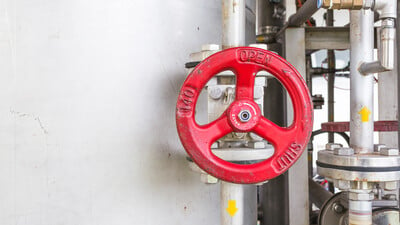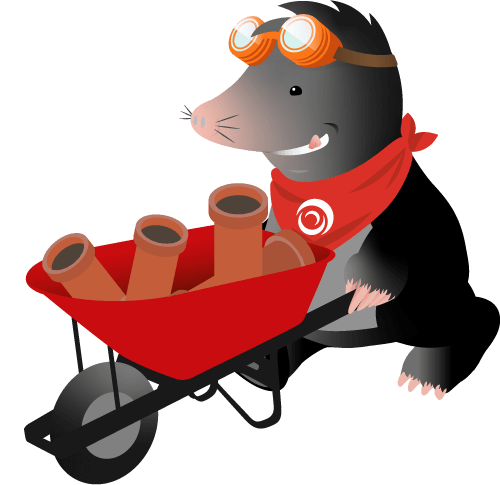Stop taps control water flow in residential and commercial water supply systems. Not all stop taps are equal: while the purpose of their function remains essentially the same, their style and function are designed according to what water system they are to be installed on and where they are located within the system.
Differences between them also occur depending on whether they are to be used in a domestic, commercial or industrial setting. In this post, we discuss the different types of stop taps, how and why they are different, and what you need to consider when selecting a stop tap.
What Are Stop Taps?
Stop taps, also known as stopcocks or shut-off valves, are used to stop the water supply to a single appliance, a section of a water system, or an entire property. While they share a common function, domestic and commercial stop taps differ in their design, capacity and purpose. Understanding these differences can help you select the right stop tap for your installation or maintenance project.
Domestic Stop Taps: Features and Uses
Domestic stop taps of a type commonly found inside homes, control water flow to individual fixtures such as sinks, toilets, appliances, or the entire home. These are typically smaller than their commercial counterparts, with a simpler design that makes them easier to operate.
Domestic stop taps are generally installed indoors, often under sinks, behind toilets, or close to the main water supply line. Due to their location, they are usually made of materials that resist indoor conditions, such as brass or plastic.
The most common types of domestic stop taps are:
Ball Valves
A ball valve features a rotating spherical ball with a hole through its centre to control water flow. When the ball's hole is aligned with the pipe, water flows through. Turning the handle through 90 degrees rotates the ball, blocking the flow.
Ball valves provide a tight seal, are durable, and offer quick operation, making them ideal for quickly turning a water supply on and off in a quarter turn. Their design also minimises pressure drop and supports high-pressure applications.
Gate Valves
A gate valve uses a flat or wedge-shaped gate which is raised and lowered by turning a wheel-shaped handle through multiple rotations to control water flow. When the gate is lifted, it allows fluid to pass through the valve body, and when it is lowered, it blocks the flow completely. Unlike ball valves, gate valves are best suited for applications where gradual control is needed, as they provide precise regulation and minimal pressure loss. They are typically used in systems where valves are infrequently operated, such as main water supply lines.
Fixture Shutoff Valves
A fixture shut-off valve is a small valve installed near individual appliances or fixtures such as sinks, toilets, or washing machines to control water supply to that specific appliance or fixture. Typically, these valves come in either straight or angled designs and use a rotating handle to open or close the flow. They allow for quick isolation of water to a single fixture without affecting the rest of the household plumbing, making them ideal for maintenance or emergency repairs.
Commercial Stop Taps: Design and Applications
Commercial stop taps are manufactured to handle higher pressures and larger volumes of water. They are commonly found in commercial buildings, industrial facilities and multi-unit properties where water control is critical for maintenance and safety.
Commercial stop taps are typically made of heavy-duty materials such as stainless steel or high-strength brass. Their design may include additional features like pressure gauges, locking mechanisms and enhanced sealing capabilities to prevent leaks.
Key types include:
Large Ball Valves and Gate Valves:
Similar in design to their domestic cousins, these are built to control significant water flow in main pipelines.
Pressure-reducing Valves
A pressure-reducing valve (PRV) is a specialised valve used to regulate and reduce incoming water pressure in commercial and multi-storey buildings. It works by automatically adjusting an internal diaphragm or piston to maintain a consistent downstream pressure, despite fluctuations in the main supply.
This helps protect the plumbing system from damage, reduces water consumption, and ensures a steady flow to all fixtures. PRVs are typically made of robust materials like brass or stainless steel to handle higher pressures and demanding commercial applications.
Stop-and-Waste Valves:
A stop-and-waste valve is a type of outdoor shut-off valve that controls water flow and allows drainage of the pipe when turned off. It has an additional port, or "waste" outlet, which releases residual water from the line to prevent freezing in cold weather conditions.
This design makes it ideal for irrigation systems or exterior water lines that are not in use during winter. Stop-and-waste valves are typically installed underground and are operated using a long key or handle.
Why Are They Different?
The main difference between domestic and commercial stop taps lies in their capacity, durability and complexity. Domestic stop taps are intended for smaller-scale applications and lower-pressure systems. They focus on ease of use and quick access in case of emergency repairs or maintenance.
In contrast, commercial stop taps must withstand higher pressures, larger volumes and more demanding environments. They are often used as part of a broader water management system, where their functionality affects the entire building or property.
Choosing the Right Stop Tap
When selecting a stop tap, it’s essential to consider factors like water pressure, location and intended use. For domestic installations, a simple ball valve or fixture shutoff valve is usually sufficient. Domestic stop taps are widely used and if you’re unsure which type you need, your local plumbing merchant is likely to be able to help you.
For commercial properties, more robust options such as pressure-reducing or stop-and-waste valves are preferable. As they are more complex and designed to withstand different water pressures commercial stop valves should probably be installed by professional commercial plumbers, who will know which valve type and specification will be required.
We hope you have found this information helpful and interesting. If you have any further questions, you are always welcome to call the friendly team of drainage experts at Drainfast on 01420 555600 or email [email protected].
Also, look out for more articles in our ongoing series of blog posts, bringing you useful information, insights, guides and tips on all things drainage!

Written by
Bob Stone
Technical Sales
Heading up our Technical Estimating Department, Bob is our in-house quantity surveyor.

